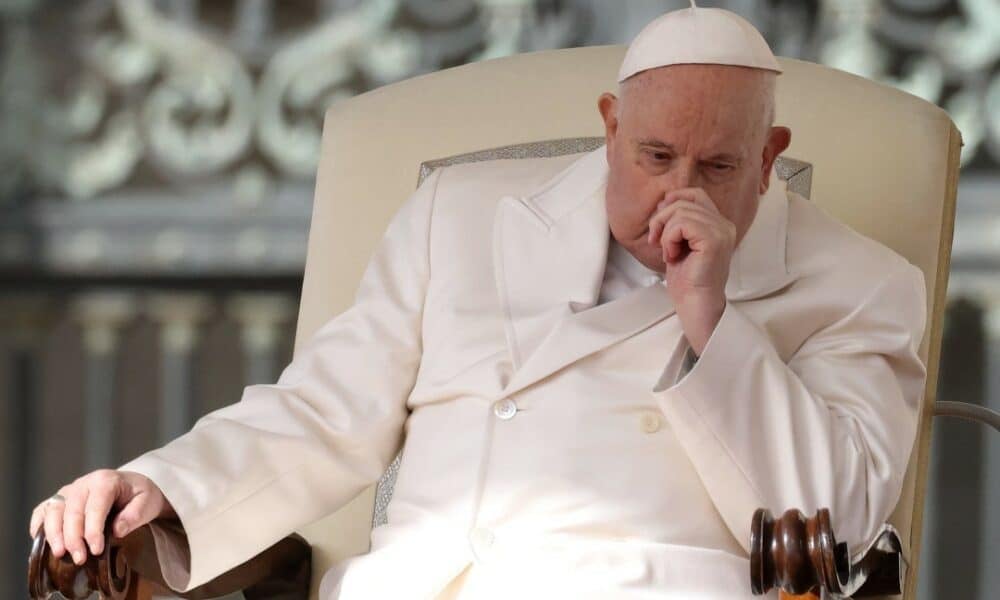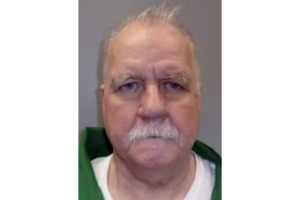Pope Francis, now 88, has shown steady signs of improvement following a challenging period marked by over a month of hospitalization to treat bilateral pneumonia. Since leaving Rome’s Gemelli Hospital in late March, the Argentine pontiff has adhered to a strict recovery protocol, including daily sessions of respiratory and motor physiotherapy, alongside efforts to strengthen his voice, which was weakened by the illness. Despite this progress, the Vatican has yet to confirm his participation in the Semana Santa celebrations, set to begin on Sunday, April 13. The decision hinges on factors such as his ongoing clinical progress and weather conditions, as cold temperatures could pose a risk to his respiratory health.
The pontiff’s condition has evolved positively in recent weeks. He no longer relies on continuous oxygen support, using it only occasionally for therapeutic purposes. Recent tests show controlled inflammatory markers, and the lung infection, once considered critical, is steadily receding. Mobility, though still limited, has also improved, enabling Francis to take short walks within the Vatican and hold meetings with Curia members. On Thursday, he welcomed representatives from the Secretariat of State and prefects of Dicasteries, signaling a cautious return to administrative duties.
Caution remains paramount. Medical teams advise rest and restrictions on activities requiring physical exertion or prolonged public exposure. The possibility of Francis leading events like the Palm Sunday Mass or the Way of the Cross at the Colosseum remains uncertain. Cardinal Leonardo Sandri has been designated to preside over the opening Mass of Semana Santa should the Pope be unable to participate.
A recovery fraught with challenges
Francis’s hospitalization, which began on February 14, marked one of the most critical moments of his pontificate. Initially diagnosed with bronchitis, his condition worsened into bilateral pneumonia, complicated by a polymicrobial infection involving bacteria, viruses, and fungi. The situation demanded intensive care, including non-invasive mechanical ventilation and high-flow oxygen. At two critical junctures, his respiratory distress raised fears for his survival, with episodes of breathing difficulty and potential risks to other organs.
Over the five weeks at Gemelli Hospital, the pontiff faced not only physical hurdles but also emotional strain. Confined to a hospital room, he expressed discomfort at being separated from his duties, according to aides. Yet, he maintained contact with Catholic communities worldwide, sending messages of support and gratitude for prayers. A notable gesture was his call to a parish in Gaza, reflecting his concern for conflict zones despite his personal fragility.
His discharge on March 23 was met with celebration by thousands of faithful gathered at St. Peter’s Square and near Gemelli. Appearing on the hospital balcony, Francis waved to the crowd in an emotional moment. His voice, still frail, bore the effects of pneumonia, which had weakened respiratory muscles and necessitated extensive vocal rehabilitation.
Key milestones in recovery
The Pope’s path to recovery can be traced through several pivotal moments:
- February 14: Admitted to Gemelli Hospital after bronchitis worsens.
- February 18: Bilateral pneumonia confirmed via CT scan.
- February 28: Severe respiratory crisis, requiring non-invasive ventilation.
- March 9: Initial signs of improvement, with reduced lung infection.
- March 23: Discharged after 38 days of hospitalization.
- April 6: Gradual resumption of duties, including Vatican meetings.
These milestones highlight the severity of the condition and the slow but steady progress in his health. Physiotherapy has played a central role, aiding lung strength and mobility, which was already restricted by chronic knee and hip issues.
A pontificate under strain
Health challenges have been a recurring theme throughout Francis’s 12-year papacy. Since youth, he has lived with respiratory limitations, exacerbated by the removal of part of a lung at age 21 due to a severe pneumonia. In recent years, bronchitis, lung inflammations, and frequent flus have led to hospitalizations and canceled engagements. In 2023, he spent three nights in Gemelli for an infectious bronchitis, and in 2024, he withdrew from events due to respiratory issues linked to a flu.
Despite these setbacks, Francis maintains a demanding schedule. Even during his hospital stay, he approved administrative reforms for the Church and contributed to canonization decisions. His resolve to lead under adversity is seen by many as a testament to his resilience. However, his absence from public events, such as the Sunday Angelus blessings, has sparked concern among the faithful, who eagerly await each health update.
The 2025 Jubilee, a major event in the Catholic calendar, adds pressure to his schedule. With millions of pilgrims expected in Rome, Francis’s participation is deemed vital to the celebrations’ success. The prospect of him not being fully recovered by then raises questions about how the Church will manage the events in his absence.
Global impact of the Pope’s health
Francis’s fragility has galvanized Catholics worldwide. In Rome, groups of faithful gathered regularly outside Gemelli Hospital, holding signs and messages of support. Children from Catholic schools sent drawings and letters, many displayed in the pontiff’s room. On social media, hashtags like #ForzaPapa gained traction, with millions sharing recovery wishes and iconic moments from his papacy.
Beyond emotional support, the Pope’s health carries practical implications for the Church. Semana Santa, a cornerstone of the liturgical calendar, draws thousands to the Vatican. Francis’s absence would resonate not only in Rome but across global Catholic communities, who view him as a symbol of unity and hope.
The decision on his participation will be finalized in the coming days, based on medical evaluations and weather forecasts. Mild temperatures could facilitate his attendance at outdoor events, but rain or cold may pose risks, given his susceptibility to respiratory infections.

What to expect for Semana Santa
Semana Santa, spanning from Palm Sunday to Easter, is a time of reflection and renewal for Catholics. In the Vatican, celebrations include Masses, processions, and the traditional Way of the Cross at the Colosseum, events that attract crowds and require the Pope’s physical presence. In recent years, Francis has adapted his involvement, using a wheelchair for mobility and delegating readings to aides due to health constraints.
For 2025, the Vatican is preparing contingencies should the Pope be unable to attend. Beyond Cardinal Leonardo Sandri, other Curia members are ready to take prominent roles in the ceremonies. Live broadcasts featuring pre-recorded messages from Francis are also under consideration, ensuring his voice reaches the faithful even if he cannot be present.
Preparations for Semana Santa are in full swing. St. Peter’s Square is being adorned with flowers and liturgical symbols, while security teams bolster protocols to accommodate pilgrims. The hope is that Francis can attend at least one event, reinforcing his bond with the Catholic community.
An adjusted routine
Since returning to the Vatican, Francis has embraced a lighter but still active routine. He dedicates time to prayer, reading, and meetings with close aides. Last week, he surprised the faithful by extending an internal walk to pray at St. Peter’s Basilica, a gesture reflecting his commitment to spirituality amid recovery.
Physiotherapy sessions, held twice daily, focus on lung-strengthening exercises and motor coordination. His voice, heavily impacted by the pneumonia, is being supported by speech therapists. Though still weak, it now allows for short conversations and recorded messages to the faithful.
The pontiff’s diet has been tailored to aid recovery. Light, nutrient-rich meals, easy to digest, help sustain his energy. Hydration, critical to preventing respiratory complications, is closely monitored by the medical team, which remains on-site at the Vatican.
Support from the Catholic community
The faithful’s solidarity has been unwavering throughout Francis’s recovery. In his native Buenos Aires, special Masses were held in his honor. In Brazil, parishes organized novenas and prayer gatherings, particularly in São Paulo and Rio de Janeiro, where devotion to the Pope runs deep.
Support extended beyond Catholics. Leaders from other faiths, such as the grand imam of Jakarta’s Istiqlal Mosque, sent recovery wishes, underscoring Francis’s role as a figure of interfaith dialogue. Political figures, including Italian Prime Minister Giorgia Meloni, also expressed solidarity during hospital visits.
This global outpouring reflects the Pope’s influence, as he continues to inspire millions with his message of humility and closeness to the marginalized, even while facing physical limitations. His ability to lead spiritually through adversity is seen as a testament to his faith.
Ongoing care and future outlook
Francis’s recovery demands patience and discipline. While the signs are encouraging, doctors caution that his advanced age and pulmonary history make the process delicate. Secondary infections, such as bronchospasms, remain a risk, particularly in unstable weather. The Vatican maintains a rigorous monitoring system, with regular tests and treatment adjustments as needed.
Oxygen use, now limited to specific moments, is expected to decrease further as his lungs regain capacity. Respiratory physiotherapy, involving deep breathing and diaphragmatic control, will continue for months to ensure he can resume activities like speeches and Masses without strain.
Looking ahead, Francis’s health will shape the trajectory of his pontificate. The 2025 agenda, including the Jubilee and potential international trips, will require balancing his ambitions with medical advice. A planned visit to Turkey, for instance, remains uncertain, pending his physical condition.
Moments of connection with the faithful
Even during his hospital stay, Francis found ways to stay close to the faithful. Recorded messages released by the Vatican conveyed hope and calls for prayer. In one, he thanked children for sending drawings and letters to his room, saying, “You are my strength,” with visible emotion.
After his discharge, his first public appearance on Gemelli’s balcony was a milestone. Dressed in his white cassock and using nasal cannulas, he blessed the crowd, pausing to acknowledge a woman holding yellow flowers. The simple yet profound gesture reinforced his image as an approachable leader.
Back at the Vatican, new moments of connection emerged. During a recent audience, he greeted students from a Catholic school, joking about the need to “breathe well to live well.” The lighthearted remark belied the gravity of his condition, showcasing his knack for turning challenges into lessons.
The role of faith in recovery
Spirituality has been a cornerstone for Francis. While hospitalized, he spent hours in prayer, often in the hospital’s small chapel. Since returning to the Vatican, his visits to St. Peter’s Basilica have increased, albeit at quieter times to avoid crowds.
His faith also shapes his approach to illness. In messages to the faithful, he emphasized trusting God in times of hardship. “The cross teaches us to bear suffering with hope,” he said in a March recording, still bedridden. The words struck a chord, widely shared by Catholics online.
For many, Francis’s recovery is a living testament to his teachings. His persistence in working despite limitations inspires the faithful to face their own trials with courage and perseverance.

Pope Francis, now 88, has shown steady signs of improvement following a challenging period marked by over a month of hospitalization to treat bilateral pneumonia. Since leaving Rome’s Gemelli Hospital in late March, the Argentine pontiff has adhered to a strict recovery protocol, including daily sessions of respiratory and motor physiotherapy, alongside efforts to strengthen his voice, which was weakened by the illness. Despite this progress, the Vatican has yet to confirm his participation in the Semana Santa celebrations, set to begin on Sunday, April 13. The decision hinges on factors such as his ongoing clinical progress and weather conditions, as cold temperatures could pose a risk to his respiratory health.
The pontiff’s condition has evolved positively in recent weeks. He no longer relies on continuous oxygen support, using it only occasionally for therapeutic purposes. Recent tests show controlled inflammatory markers, and the lung infection, once considered critical, is steadily receding. Mobility, though still limited, has also improved, enabling Francis to take short walks within the Vatican and hold meetings with Curia members. On Thursday, he welcomed representatives from the Secretariat of State and prefects of Dicasteries, signaling a cautious return to administrative duties.
Caution remains paramount. Medical teams advise rest and restrictions on activities requiring physical exertion or prolonged public exposure. The possibility of Francis leading events like the Palm Sunday Mass or the Way of the Cross at the Colosseum remains uncertain. Cardinal Leonardo Sandri has been designated to preside over the opening Mass of Semana Santa should the Pope be unable to participate.
A recovery fraught with challenges
Francis’s hospitalization, which began on February 14, marked one of the most critical moments of his pontificate. Initially diagnosed with bronchitis, his condition worsened into bilateral pneumonia, complicated by a polymicrobial infection involving bacteria, viruses, and fungi. The situation demanded intensive care, including non-invasive mechanical ventilation and high-flow oxygen. At two critical junctures, his respiratory distress raised fears for his survival, with episodes of breathing difficulty and potential risks to other organs.
Over the five weeks at Gemelli Hospital, the pontiff faced not only physical hurdles but also emotional strain. Confined to a hospital room, he expressed discomfort at being separated from his duties, according to aides. Yet, he maintained contact with Catholic communities worldwide, sending messages of support and gratitude for prayers. A notable gesture was his call to a parish in Gaza, reflecting his concern for conflict zones despite his personal fragility.
His discharge on March 23 was met with celebration by thousands of faithful gathered at St. Peter’s Square and near Gemelli. Appearing on the hospital balcony, Francis waved to the crowd in an emotional moment. His voice, still frail, bore the effects of pneumonia, which had weakened respiratory muscles and necessitated extensive vocal rehabilitation.
Key milestones in recovery
The Pope’s path to recovery can be traced through several pivotal moments:
- February 14: Admitted to Gemelli Hospital after bronchitis worsens.
- February 18: Bilateral pneumonia confirmed via CT scan.
- February 28: Severe respiratory crisis, requiring non-invasive ventilation.
- March 9: Initial signs of improvement, with reduced lung infection.
- March 23: Discharged after 38 days of hospitalization.
- April 6: Gradual resumption of duties, including Vatican meetings.
These milestones highlight the severity of the condition and the slow but steady progress in his health. Physiotherapy has played a central role, aiding lung strength and mobility, which was already restricted by chronic knee and hip issues.
A pontificate under strain
Health challenges have been a recurring theme throughout Francis’s 12-year papacy. Since youth, he has lived with respiratory limitations, exacerbated by the removal of part of a lung at age 21 due to a severe pneumonia. In recent years, bronchitis, lung inflammations, and frequent flus have led to hospitalizations and canceled engagements. In 2023, he spent three nights in Gemelli for an infectious bronchitis, and in 2024, he withdrew from events due to respiratory issues linked to a flu.
Despite these setbacks, Francis maintains a demanding schedule. Even during his hospital stay, he approved administrative reforms for the Church and contributed to canonization decisions. His resolve to lead under adversity is seen by many as a testament to his resilience. However, his absence from public events, such as the Sunday Angelus blessings, has sparked concern among the faithful, who eagerly await each health update.
The 2025 Jubilee, a major event in the Catholic calendar, adds pressure to his schedule. With millions of pilgrims expected in Rome, Francis’s participation is deemed vital to the celebrations’ success. The prospect of him not being fully recovered by then raises questions about how the Church will manage the events in his absence.
Global impact of the Pope’s health
Francis’s fragility has galvanized Catholics worldwide. In Rome, groups of faithful gathered regularly outside Gemelli Hospital, holding signs and messages of support. Children from Catholic schools sent drawings and letters, many displayed in the pontiff’s room. On social media, hashtags like #ForzaPapa gained traction, with millions sharing recovery wishes and iconic moments from his papacy.
Beyond emotional support, the Pope’s health carries practical implications for the Church. Semana Santa, a cornerstone of the liturgical calendar, draws thousands to the Vatican. Francis’s absence would resonate not only in Rome but across global Catholic communities, who view him as a symbol of unity and hope.
The decision on his participation will be finalized in the coming days, based on medical evaluations and weather forecasts. Mild temperatures could facilitate his attendance at outdoor events, but rain or cold may pose risks, given his susceptibility to respiratory infections.

What to expect for Semana Santa
Semana Santa, spanning from Palm Sunday to Easter, is a time of reflection and renewal for Catholics. In the Vatican, celebrations include Masses, processions, and the traditional Way of the Cross at the Colosseum, events that attract crowds and require the Pope’s physical presence. In recent years, Francis has adapted his involvement, using a wheelchair for mobility and delegating readings to aides due to health constraints.
For 2025, the Vatican is preparing contingencies should the Pope be unable to attend. Beyond Cardinal Leonardo Sandri, other Curia members are ready to take prominent roles in the ceremonies. Live broadcasts featuring pre-recorded messages from Francis are also under consideration, ensuring his voice reaches the faithful even if he cannot be present.
Preparations for Semana Santa are in full swing. St. Peter’s Square is being adorned with flowers and liturgical symbols, while security teams bolster protocols to accommodate pilgrims. The hope is that Francis can attend at least one event, reinforcing his bond with the Catholic community.
An adjusted routine
Since returning to the Vatican, Francis has embraced a lighter but still active routine. He dedicates time to prayer, reading, and meetings with close aides. Last week, he surprised the faithful by extending an internal walk to pray at St. Peter’s Basilica, a gesture reflecting his commitment to spirituality amid recovery.
Physiotherapy sessions, held twice daily, focus on lung-strengthening exercises and motor coordination. His voice, heavily impacted by the pneumonia, is being supported by speech therapists. Though still weak, it now allows for short conversations and recorded messages to the faithful.
The pontiff’s diet has been tailored to aid recovery. Light, nutrient-rich meals, easy to digest, help sustain his energy. Hydration, critical to preventing respiratory complications, is closely monitored by the medical team, which remains on-site at the Vatican.
Support from the Catholic community
The faithful’s solidarity has been unwavering throughout Francis’s recovery. In his native Buenos Aires, special Masses were held in his honor. In Brazil, parishes organized novenas and prayer gatherings, particularly in São Paulo and Rio de Janeiro, where devotion to the Pope runs deep.
Support extended beyond Catholics. Leaders from other faiths, such as the grand imam of Jakarta’s Istiqlal Mosque, sent recovery wishes, underscoring Francis’s role as a figure of interfaith dialogue. Political figures, including Italian Prime Minister Giorgia Meloni, also expressed solidarity during hospital visits.
This global outpouring reflects the Pope’s influence, as he continues to inspire millions with his message of humility and closeness to the marginalized, even while facing physical limitations. His ability to lead spiritually through adversity is seen as a testament to his faith.
Ongoing care and future outlook
Francis’s recovery demands patience and discipline. While the signs are encouraging, doctors caution that his advanced age and pulmonary history make the process delicate. Secondary infections, such as bronchospasms, remain a risk, particularly in unstable weather. The Vatican maintains a rigorous monitoring system, with regular tests and treatment adjustments as needed.
Oxygen use, now limited to specific moments, is expected to decrease further as his lungs regain capacity. Respiratory physiotherapy, involving deep breathing and diaphragmatic control, will continue for months to ensure he can resume activities like speeches and Masses without strain.
Looking ahead, Francis’s health will shape the trajectory of his pontificate. The 2025 agenda, including the Jubilee and potential international trips, will require balancing his ambitions with medical advice. A planned visit to Turkey, for instance, remains uncertain, pending his physical condition.
Moments of connection with the faithful
Even during his hospital stay, Francis found ways to stay close to the faithful. Recorded messages released by the Vatican conveyed hope and calls for prayer. In one, he thanked children for sending drawings and letters to his room, saying, “You are my strength,” with visible emotion.
After his discharge, his first public appearance on Gemelli’s balcony was a milestone. Dressed in his white cassock and using nasal cannulas, he blessed the crowd, pausing to acknowledge a woman holding yellow flowers. The simple yet profound gesture reinforced his image as an approachable leader.
Back at the Vatican, new moments of connection emerged. During a recent audience, he greeted students from a Catholic school, joking about the need to “breathe well to live well.” The lighthearted remark belied the gravity of his condition, showcasing his knack for turning challenges into lessons.
The role of faith in recovery
Spirituality has been a cornerstone for Francis. While hospitalized, he spent hours in prayer, often in the hospital’s small chapel. Since returning to the Vatican, his visits to St. Peter’s Basilica have increased, albeit at quieter times to avoid crowds.
His faith also shapes his approach to illness. In messages to the faithful, he emphasized trusting God in times of hardship. “The cross teaches us to bear suffering with hope,” he said in a March recording, still bedridden. The words struck a chord, widely shared by Catholics online.
For many, Francis’s recovery is a living testament to his teachings. His persistence in working despite limitations inspires the faithful to face their own trials with courage and perseverance.







